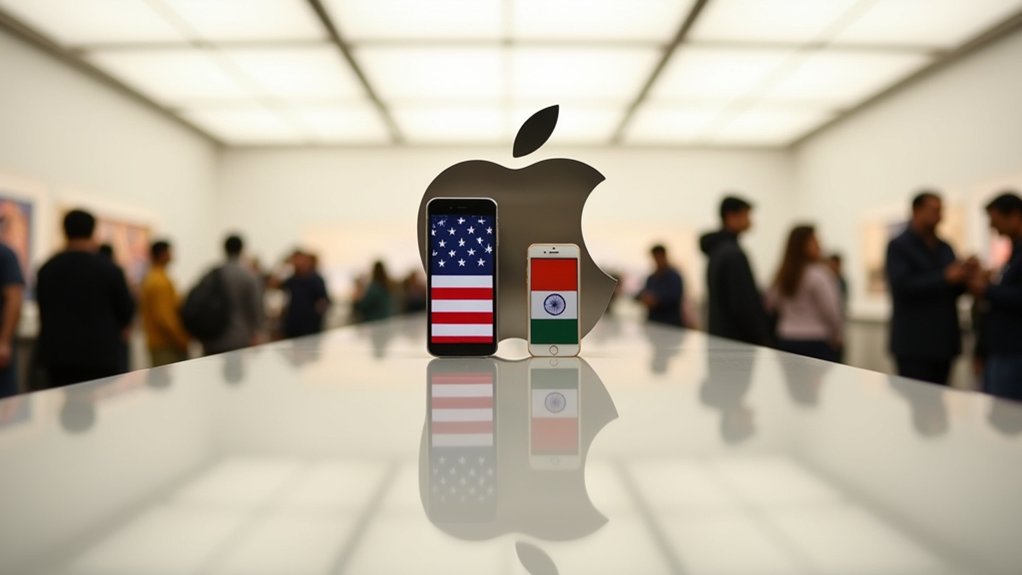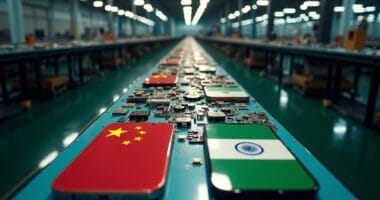Former President Trump demanded Apple abandon its India manufacturing plans at the Doha summit, insisting iPhone production return to American soil. The move would spike iPhone prices to $3,500 and increase labor costs by 30%. Apple’s already ramping up Indian operations, with exports hitting $17.4 billion and partnerships with Tata and Pegatron in full swing. Meanwhile, Apple’s caught between US nationalism and market realities – a complex dance that’s far from over.

How quickly fortunes can change in the tech world.
Former President Donald Trump has thrown a wrench into Apple’s carefully laid plans to shift iPhone production to India, publicly demanding that CEO Tim Cook bring manufacturing back to American soil instead.
The timing couldn’t be more awkward.
Apple had just announced its intention to source most U.S. iPhone supply from India, with exports already surging to $17.4 billion.
Indian authorities even approved a $435 million Foxconn project for Apple chip manufacturing.
The company has already partnered with Tata and Pegatron for manufacturing operations.
But Trump, speaking at a business summit in Doha, wasn’t having it.
His beef?
India’s sky-high tariffs.
And he’s not entirely wrong – India does have some of the steepest trade barriers globally.
Trump cited their high tariff rates as the primary reason Apple should avoid building there.
But here’s where things get interesting: moving production to the U.S. would jack up iPhone prices astronomically.
We’re talking about a potential $3,500 price tag, according to analyst Dan Ives.
That’s enough to make even die-hard Apple fans think twice.
The math is brutal.
Labor costs would spike 25-30% for U.S.-made iPhones.
These manufacturing decisions could significantly impact long-term growth and national economic prosperity.
Sure, Apple’s fat profit margins could absorb some of that hit, but consumers would definitely feel the pinch.
And right now, exactly zero iPhones are manufactured in America.
Meanwhile, Apple’s got bigger problems.
Their China sales have reportedly nosedived by 50%, making India look pretty attractive as a Plan B.
The company’s already started shipping Indian-made iPhones to the U.S. to dodge tariffs and supply chain hiccups.
Trump claims Apple will increase U.S. production – though he’s suspiciously light on details or timelines.
The reality?
Apple’s already committed $500 billion to U.S. expansion over four years, including 20,000 new hires.
But completely abandoning their India strategy?
That’s a tough sell.
The standoff highlights a broader tension between U.S. economic nationalism and the realities of global manufacturing.
For now, Apple seems caught between a rock and a hard place – or more accurately, between Trump and a hot Indian market.





